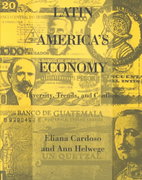Question
HI I am stuck on this problem: Consider a publisher that sells journal subscriptions to the Macroeconomics Journal (MJ).The marginal cost of printing, mailing, and
HI I am stuck on this problem:
Consider a publisher that sells journal subscriptions to the Macroeconomics Journal (MJ).The marginal cost of printing, mailing, and marketing the journal is 50. There are two types of institutions that consider purchasing subscriptions: research universities that grant PhD's, like Penn State, and colleges like Swarthmore that do not.Each school wants at most 1 subscription to MJ.Some schools are willing to pay more than others. There are 2000 universities and 2000 colleges. Demand for the two groups, respectively, are denoted U(p) and C(p) and are given by ????(????)=20001.5???? and ????(????)=20005????.
a. Suppose the publisher charges one price to all schools.What price will it charge? What will be its profits?
b. Suppose the publisher price discriminates by charging a different price to PhD granting universities than it charges to colleges.What price will it charge to each? Compare the profits here with those in part (a).
c. In this case, is it more socially efficient to price discriminate or to charge one price? Are more or fewer subscriptions sold under price discrimination than without it? Explain.
d. What would happen if universities and colleges could costlessly resell journals?
Step by Step Solution
There are 3 Steps involved in it
Step: 1

Get Instant Access to Expert-Tailored Solutions
See step-by-step solutions with expert insights and AI powered tools for academic success
Step: 2

Step: 3

Ace Your Homework with AI
Get the answers you need in no time with our AI-driven, step-by-step assistance
Get Started


